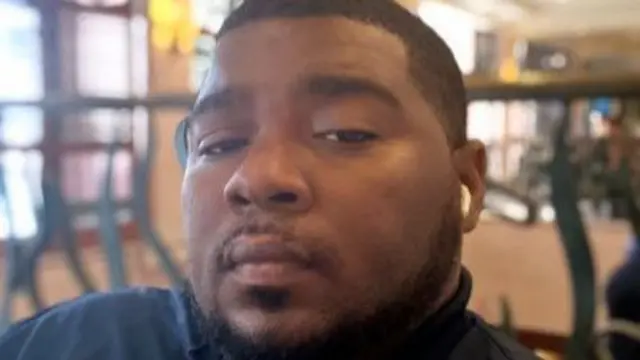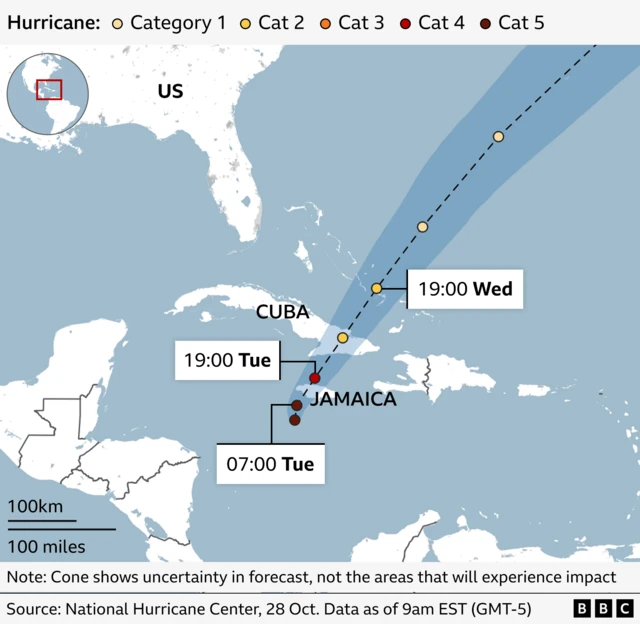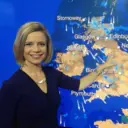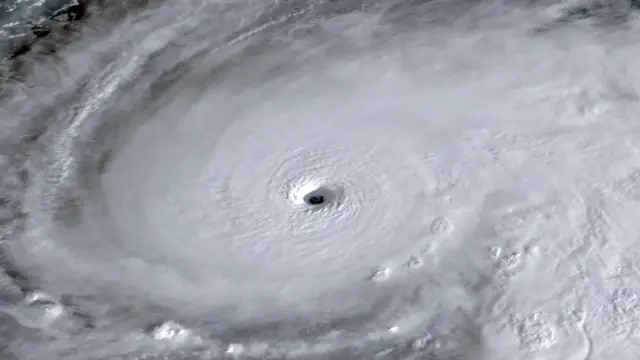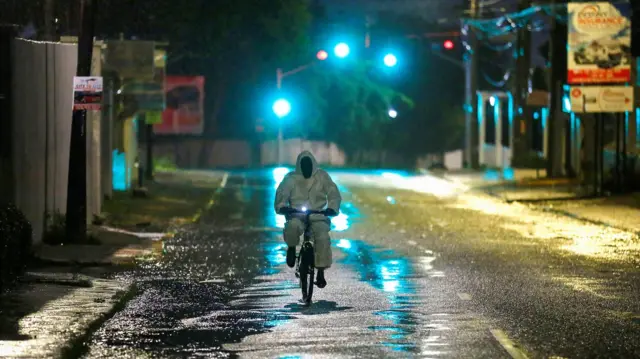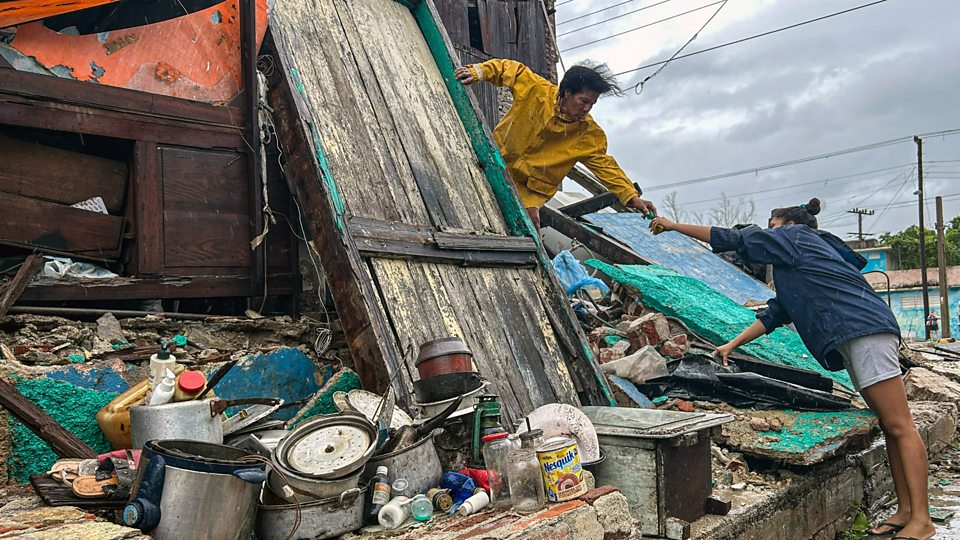Slow-moving storms are always worse because their effect lasts longerpublished at 13:07 GMT 28 October
 Elizabeth Rizzini
Elizabeth Rizzini
Lead weather presenter
Hurricane Melissa had been moving at 2mph (3.2 km/h) - walking pace - but it has now picked up to near 7mph as it has turned more northerly to north-easterly, as we were expecting.
This slow speed is devastating - slow-moving storms are always worse because they last longer.
But the slow movement does not mean the winds are slower. Melissa is a category five storm and has maintained sustained wind speeds of over 157mph (currently 175mph) for longer than 24 hours now.
Of most concern is probably the amount of water involved. It will dump a lot of rainfall and there will be a lot of time for the storm surge to hit.
There are low lying areas in Jamaica and it is likely there will be flash flooding not just from falling rain, but also a possible 13ft (3.9m) storm surge towards the south coast and water run-off form the mountains to lower-lying areas.
Over the next few days, Jamaica could experience as much as 30in (76cm) of additional rain, and 25in could fall in Cuba with an 11ft storm surge.

